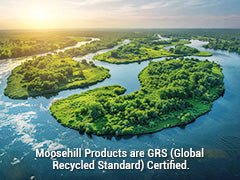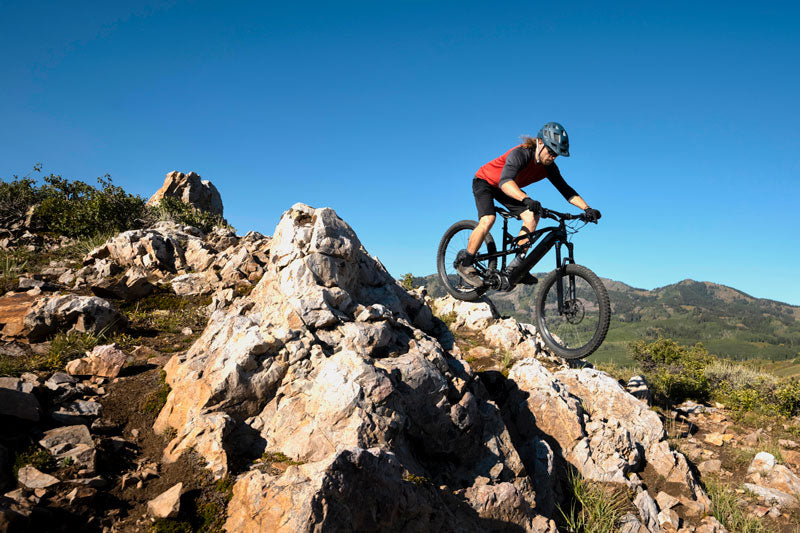LNT Law in the Outdoors
What is the LNT Law?
LeaveNoTrace (LNT) is a nationwide educational and promotional campaign initiated by U.S. government land management agencies at all levels, environmental education scholars, conservation groups, outdoor equipment manufacturers and distributors, hiking groups, and the general public. These public-private, industry-government-academia organizations have been working together since the 1980s to develop the concept of "No Trace Tourism" and to promote "Responsible Quality Tourism". Teaching the public the correct concepts and techniques for treating the environment and helping to minimize the impact of recreational activities on nature has successfully achieved good results over the years.
Background on the LNT Law:

From 1965 to 1994, the outdoor population grew six-fold, and surveys conducted by the Outward Bound School showed that in 1965, 9.9 million Americans were engaged in hiking activities, and by 1977 that number had increased to 28 million. Alpine lakes were polluted by human emissions, some trails were eroded knee-deep, campgrounds were denuded of grass, and trash of all sizes could often be found, a phenomenon that put land managers in a dilemma as they tried to satisfy the needs of tourists while trying to preserve the natural environment.
In the early 1980s, the Forest Service's initial LNT program began to be referred to other outdoor programs. While closing certain overused areas, carrying capacity controls, and limiting specific campgrounds became important management tools for land managers, environmental education of visitors was actually a more effective solution. In the early 1980s there were countless environmental education programs taught in land management units, with slogans such as "What you carry up the mountain, you carry down the mountain," "Tread lightly on the land," "Take only pictures and leave only footprints," and many others. Slogans like "If you carry something up the hill, carry it down the hill," "Tread lightly," and "Take only pictures, leave only footprints" are familiar to many hikers. In 1994 BoulderColorado-based non-profit organization, LeaveNoTrace, Inc. was responsible for coordinating all LNT unit coordination, licensing, and fundraising efforts.
Key elements of the LNT Law:
1. Plan and prepare in advance

Any outdoor activities need to plan and prepare in advance, understand the rules and regulations on environmental protection at that time, make sufficient preparations for possible situations, and choose the applicable equipment according to the understood situation. At the same time, it is necessary to fully understand the characteristics of the route in the activity area and design the route and campsite accordingly. Plan the amount of food to be carried according to the actual situation of the route, and then make simple treatment of the food, and try to centralize the packaging if it can be unpacked, so as to minimize the generation of garbage as much as possible. In short, the advance planning and preparation should be done in such a way that it is not blind, illegal, wasteful, and well prepared.
2. Traveling and camping on tolerable ground
In outdoor activities, sometimes we tend to choose unorganized cutting paths to shorten the distance and difficulty, which is not desirable. The LNT law stipulates that whenever and wherever possible, walk on existing trails, no shortcuts, no straight up and down, and the team will only take a single route when traveling. If the road is in good condition and at the same time the pack is not too heavy, consider soft-soled shoes to minimize the impact on the ground.
When hiking on non-hiking trails, choose areas such as rocky outcrops or scree slopes that can withstand human foot traffic. In such areas, spreading out is the best way to minimize the impact on the environment.

In camping activities where the environmental impact is high, the choice of campsites is very important, and we generally require campsites to be located more than 50 meters from a water source in order to exclude pollutants. On popular routes, only camp on existing campsites with hard inch of soil, concentrating camping activities on already impacted areas. If in an area with little human activity, set up camp on a site that has never been used, rather than on a lightly impacted site. Set up camp on an existing campsite that has visible signs of existing campsites, which sometimes show signs of fire making. If it is a heavily used campsite, with heavily eroded ground and exposed tree roots, it is important to both choose another place to camp and give the campsite a rest.
The most suitable places for camping are rocky, gravelly, and sandy areas, as they are very resistant to human trampling, other good choices are hay fields, and less resistant to human impact are forested areas with abundant vegetation and a leafy surface.
3. Dispose of garbage properly
"Carry what you carry up the mountain all the way down the mountain" is an important principle. Keeping the campground in its original state reflects the most basic quality of a camper. Disposal of excrement, which can be buried in a cat hole 10-20 centimeters deep and at least 60 meters away from a water source, campsite or trail, is accepted. Thinking carefully about toilet paper, nature offers many ways to be kinder to the environment, and if you must use toilet paper, you have to carry it down the mountain, which is necessary to draw our attention.

When dealing with food waste, we try to minimize packaging before we leave while also choosing to use reusable utensils whenever possible, planning the right amount to avoid waste. In camping activities, use as few cleaning products as possible, never wash your face, brush your teeth, wash your clothes or wash your vegetables directly in the water source, and pour the sewage in an earth pit that is more than 50 meters away from the campsite and the water source, and 25-30 CM deep. For food residues should be taken away completely, even some biodegradable food such as fruit cores and peels must be taken away completely.
While disposing of excreta, temporary toilets should be constructed during camping activities and pits should be dug to cover the excreta. The location of the toilets should be chosen 60 meters away from water sources, campsites and roads. To avoid secondary pollution, the toilet paper used should also be packed and taken away as much as possible, not buried or burned.
Leave a clean campsite and carry all your garbage down the mountain, along with the garbage left by others. Put all your trash in a single trash bag. Wear lighter weight shoes with flat soles and softer soles, such as sports sandals or jogging shoes, while in camp to minimize the impact of stepping on the ground, and lightweight tents are less impactful than old-fashioned canvas tents. When you leave a campsite in a primitive area, fluff up the grass; fill in the holes left by camping pegs.
4. Keeping nature as it is
Return nature to itself. When we are in the campsite, we should choose to wear lighter weight shoes with flat soles and softer soles, such as sandals, flip-flops or jogging shoes, in order to minimize the impact of stepping on the land. When you come across cultural and historical footprints, man-made sculptures, buildings, etc., you should not touch them without permission, let alone step on them. Sometimes, during our activities, we find some team members picking flowers and plants, climbing the high walls of the rockery, which are not desirable and should be stopped. When building campsites, care should also be taken not to dig ditches, change the course of streams and rivers, and when leaving restore the campsite to a point where it can attract later campers, to achieve the goal of not importantly damaging other surfaces.
5. Fire in the wild
Don't use fire in wild activities, in general fire is a big shock to the natural environment, after one fire its traces become bigger and bigger and never go away, the permanent damage caused by fire to the soil can be as deep as 10 centimeters, so in outdoor activities, use a proper stove for cooking, wear enough clothes to protect you from the cold, use a tent, and use a good sleeping bag to keep you warm and dry, and don't readily Use fire.
In the event that you must use firewood, first determine if it is allowed where you are, if it is fire season, and make certain that you find downed wood for fuel rather than harvesting live trees; the ideal fuel is a branch thinner than your wrist. When lighting a fire, choose to build the fire in a central area where there are signs of a fire, and scatter the ashes in the grass after the wood has burned all the way down.
In outdoor activities, we do not advocate smoking, in addition to the "toxic" harm caused by tobacco itself, its cigarette butts are made of acetate plastic, which is not biodegradable, and used cigarette butts also contain lead, mercury, arsenic, acetone, vinyl chloride, formaldehyde and hydrogen cyanide in smoke. Even if you must smoke, you must stay away from your teammates to avoid secondary pollution, and the cigarette butts need to be centralized with the garbage and brought down the mountain.
6. Respect wildlife
In outdoor activities, we should respect the habits and environment of wildlife, and achieve a peaceful coexistence with them. To pay attention to the protection of water, the protection of animals rely on the source of survival, whether or not you see wildlife, you should know that your short visit can not be avoided to affect the local wildlife, when you camp not far from the source of water, try to go back and forth to the source of water only once, in order to minimize the interference with the wildlife, carrying collapsible water bags filled with water, rather than directly with pots and pans back and forth to the source of water loaded with water, so that only back and forth to the source of water, reducing interference with animals. once to minimize disturbance to animals.
Also, never feed wild animals, no matter how cute they are, they should not be fed freely, it is these wild animals that will suffer once they lose their ability to survive. At the campsite, put all food and attractants in a safe location as well to avoid getting the local wildlife into the habit of visiting the campsite.
Observe from a distance, avoid feeding and coexist peacefully with the wildlife.
7. Consider other people in the field
Before starting outdoor activities, you should fully understand the local customs, respect the local ethnic customs, respect the living habits and customs of others, and develop good habits. Don't disturb others by entertaining in the camping area, minimize sound as well as visual disturbances, and do whatever you can think of to keep the nature as well as the campsite quiet, as this is the reason why most outdoor enthusiasts are close to nature.
Respecting and caring for nature and maintaining ecological balance is the responsibility of us outdoor enthusiasts. Whether in the city or outdoors, we should publicize environmental protection, start from ourselves, influence others through our actions, and spread the correct concept of environmental protection, so that our children and grandchildren can enjoy the blue sky and green water.
For outdoor activities, leave nothing but footprints; take nothing but photos and fresh air!
--- END ---
For more details about hiking Clothing , please click here to choose the best-fitting products!

【Hiking Advice】
· The Golden Rules for Hiking in 2024
· Hiking Tips for Beginners
· Top 7 Most Common Mistakes When Hiking
【Biking Advice】
· What shorts do Mountain Bikers wear?
· Why Are Mountain Bike Shorts Padded Instead of the Seat?
· Comfortable and Stylish: 5 Expert Tips for Bike Shorts
【Golfing Advice】
· Do You Wear Pants or Shorts to Golf?
· Quick Guide: Choosing the Perfect Golf Pants
· 4 Tips to Efficiently Choose Your Golf Clothing and Accessories
【Ski & Snow Advice】
· What pants are good for snow
· Can Snow Pants Be Used as Rain Pants?










